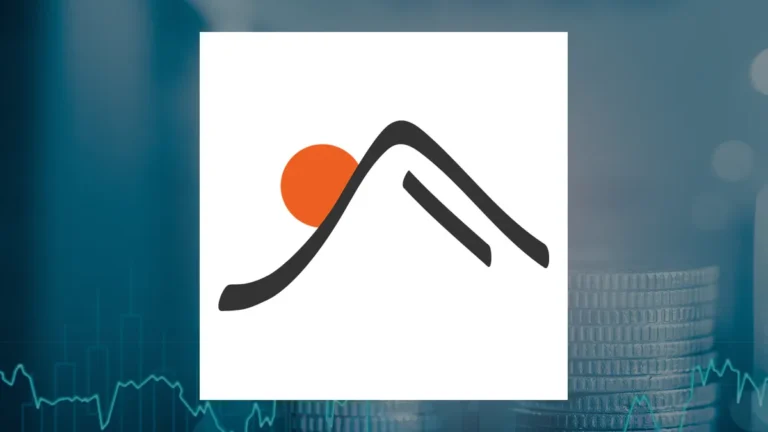
The Growing Cybersecurity Threat in the Insurance Sector
In a recent study, SecurityScorecard unveiled alarming statistics regarding cybersecurity vulnerabilities within the insurance industry. The research indicates that 59% of breaches among the top 150 insurance companies are linked to third-party attack vectors, highlighting significant weaknesses in the sector’s supply chain. This revelation is particularly concerning as the insurance industry plays a pivotal role in protecting sensitive financial and personal data. The interconnected network—from carriers and reinsurers to brokers, claims processors, and specialized IT providers—while essential for delivering comprehensive services to millions, inadvertently introduces substantial cyber risks.
Andrew Correll, Senior Director of Cyber Insurability at SecurityScorecard, remarked on this pressing issue: “Insurance companies’ reliance on technology to manage daily operations has outpaced their ability to secure it. Cyber risks don’t stop at the first layer of defense—they extend deep into the supply chain, where vulnerabilities are harder to detect and even harder to mitigate.” His statement underscores an urgent need for the industry to reassess its approach to third-party security, emphasizing a strategic shift in prioritization to fortify these extended networks against potential threats.
This report not only sheds light on the pervasive nature of cyber threats but also sets the stage for a deeper exploration into how these vulnerabilities manifest across different segments of the insurance sector. By examining specific case studies and dissecting key findings from the research, we aim to provide a comprehensive overview of the current cybersecurity landscape in the insurance industry. This analysis will serve as a crucial foundation for understanding the systemic risks involved and pave the way for discussing effective mitigation strategies tailored specifically to this sector’s unique challenges.
Key Findings: A Detailed Analysis of Breach Vulnerabilities in the Insurance Sector
The SecurityScorecard research offers a granular view of the cybersecurity challenges facing the insurance industry, revealing several critical insights that underscore the severity of the situation. Notably, 28% of the top 150 insurance companies reported breaches—a figure that starkly contrasts with the S&P 500 average of 21% and is more than double the breach rate of the U.S. energy industry, which stands at 14%. These numbers highlight not only the heightened risk profile of the insurance sector but also suggest inherent vulnerabilities in its operational frameworks.
Delving deeper, the study found that 59% of all breaches were attributable to third-party attack vectors. This rate is the highest observed thus far and significantly exceeds the global cross-industry average of 29%. Specifically, third-party software and IT issues were responsible for half of these breaches, pointing to a critical area of concern. The reliance on external vendors for software solutions and IT services appears to be a major conduit for cyber threats, exposing a fundamental flaw in the industry’s cybersecurity architecture.
Insurance carriers, in particular, bear the brunt of these third-party breaches. Although they constitute approximately 27% of the total sample, carriers account for a disproportionate 50% of companies affected by such incidents. This disparity suggests that carriers are either more frequently targeted due to their central role in the industry or are less equipped to defend against sophisticated cyber-attacks propagated through their extensive networks of partners and suppliers.
Further complicating the cybersecurity landscape is the prevalence of compromised credentials. Over half (56%) of the companies surveyed experienced at least one instance of credential compromise over the past two years. This statistic highlights a persistent vulnerability in access management systems, which can be exploited by attackers to gain unauthorized entry into sensitive systems and data repositories.
Additionally, malware infections and device compromises have emerged as significant threats, affecting 17% of the companies last year. These types of attacks can cripple operations, lead to data breaches, and erode customer trust, posing a substantial risk to both individual firms and the broader insurance ecosystem.
The lowest-scoring cyber risk factors identified in the sector include application security, DNS health, and network security. Interestingly, DNS health rarely ranks among the primary concerns, yet its neglect could potentially open avenues for cybercriminals to exploit. These findings collectively paint a picture of an industry struggling to keep pace with evolving cyber threats, particularly those emanating from third-party sources.
By dissecting these statistics, it becomes evident that the insurance sector faces a multifaceted cybersecurity challenge. Each finding not only points to specific areas of vulnerability but also emphasizes the urgent need for enhanced security measures and robust third-party risk management protocols. As we proceed to discuss actionable recommendations, these insights will guide the formulation of targeted strategies aimed at mitigating these pervasive risks and safeguarding the industry’s critical assets.
Strategic Recommendations for Enhancing Cybersecurity in the Insurance Industry

Based on the comprehensive analysis provided by the SecurityScorecard STRIKE team, several actionable insights emerge that could significantly bolster the cybersecurity posture of the insurance sector. The primary recommendation involves strengthening third-party risk management, particularly for insurance carriers who are disproportionately affected by third-party breaches. Carriers must prioritize partnerships with high-risk entities such as IT vendors and brokers, implementing rigorous assessments and continuous monitoring to identify and mitigate vulnerabilities before they can be exploited.
Moreover, ensuring that vendors themselves maintain effective Third-Party Risk Management (TPRM) programs is crucial. This extends the responsibility of cybersecurity beyond direct relationships to include fourth-party risks—those originating from vendors’ own suppliers. Such an approach closes critical gaps in the supply chain and prevents cascading breaches like those seen in the MOVEit campaign, where vulnerabilities in a supplier’s system led to widespread impacts.
Another vital strategy is the firm stance against paying ransomware demands. While it might seem expedient to pay ransoms to regain access to critical systems or data, this practice not only encourages further attacks but also exposes companies to legal repercussions and does not guarantee complete recovery. Instead, insurance companies should invest in robust backup solutions and incident response plans that minimize downtime and data loss without capitulating to cybercriminals’ demands. This proactive approach not only deters criminals but also protects the broader ecosystem by reducing the profitability of ransomware attacks.
Implementing these strategies requires a cultural shift within organizations towards a more security-centric mindset. It involves training employees, enhancing technological defenses, and fostering a collaborative environment where information about potential threats is shared freely among stakeholders. By adopting these comprehensive measures, the insurance industry can build a resilient framework capable of withstanding the complex and evolving cyber threats it faces today.
Methodology: Evaluating Cybersecurity Ratings and Breach Histories
To ensure the accuracy and reliability of its findings, SecurityScorecard employed a meticulous methodology in assessing the cybersecurity posture of the top 150 companies within the insurance sector. The research primarily focused on analyzing SecurityScorecard ratings, which are derived from a proprietary algorithm that continuously monitors ten groups of risk factors including network security, DNS health, web application security, patching cadence, endpoint security, IP reputation, web application security, cuber awareness, information leakage, and hacker chatter. These ratings provide a real-time snapshot of an organization’s security performance, enabling precise comparisons across companies and industries.
In addition to these ratings, the study incorporated publicly available breach histories to offer a historical perspective on each company’s susceptibility to cyber threats. This dual approach allowed researchers to correlate current security practices with past breach incidents, providing a comprehensive view of the cybersecurity landscape within the insurance sector.
The supply chain was strategically segmented into five main categories for detailed analysis: Insurance carriers, reinsurance companies, agencies and brokers, third-party claims processors and administrators, and insurance-specific software and IT products and services. This segmentation facilitated a focused examination of each segment’s unique vulnerabilities and security challenges, ensuring that the insights gained were both relevant and actionable. By organizing the research in this manner, SecurityScorecard was able to deliver clear, sector-specific insights that highlight the state of cybersecurity across different facets of the insurance industry. This structured methodology not only enhances the credibility of the findings but also aids stakeholders in understanding the nuanced dynamics of cyber risks within their specific operational contexts.





